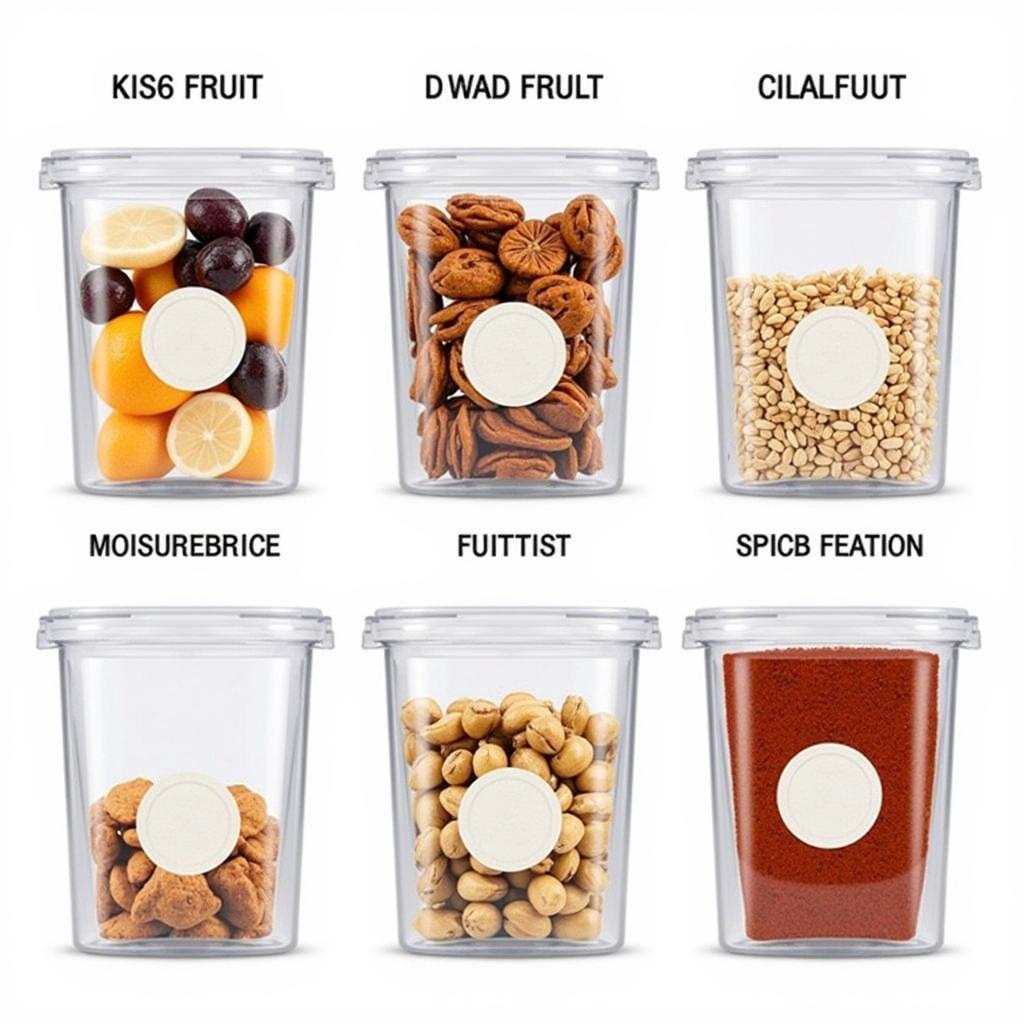Moisture Absorbers For Food are essential tools in the fight against food spoilage. They help preserve the quality and freshness of your pantry staples, dry goods, and even medications by regulating humidity levels in storage containers. Learning how to use these little packets effectively can significantly extend the shelf life of your precious supplies.  Moisture Absorbers in Various Food Storage Containers
Moisture Absorbers in Various Food Storage Containers
What are Moisture Absorbers for Food and Why Do You Need Them?
Moisture is the enemy of long-term food storage. It encourages mold growth, bacterial proliferation, and can lead to undesirable changes in texture and flavor. Moisture absorbers, also known as desiccants, combat this by drawing in excess moisture, keeping your food dry and safe. They are particularly helpful for survival dry food, ensuring your emergency supplies remain edible for extended periods.
Think about those little packets you find in shoe boxes or vitamin bottles – those are moisture absorbers. However, not all moisture absorbers are created equal. It’s crucial to use moisture absorber food safe varieties to ensure they don’t contaminate your food.
Types of Food-Safe Moisture Absorbers
There are several types of moisture absorbers suitable for food storage, each with its own advantages and disadvantages:
- Silica Gel: These are the most common type, found in those familiar little packets. They are non-toxic and highly effective. You can even find reusable silica gel packets, offering a sustainable solution. Looking for reliable food safe silica packets? We’ve got you covered!
- Oxygen Absorbers: While not strictly moisture absorbers, these packets remove oxygen, which can contribute to spoilage. They are often used in conjunction with moisture absorbers for optimal preservation, especially for long-term food storage.
- Clay Desiccants: These are a natural and environmentally friendly option. Clay effectively absorbs moisture and can be easily disposed of.
- Calcium Chloride: This type is highly absorbent, making it suitable for environments with high humidity.
 Different Types of Food-Safe Moisture Absorbers
Different Types of Food-Safe Moisture Absorbers
How to Use Moisture Absorbers Effectively
Using moisture absorbers for food isn’t just about tossing a packet in a container. For maximum effectiveness, consider the following:
- Choose the Right Absorber: Consider the type of food you are storing, the storage environment, and the length of storage.
- Use the Correct Amount: Too little won’t be effective, and too much is unnecessary. Follow the manufacturer’s recommendations.
- Seal Your Containers Properly: Use airtight containers, such as smart food storage containers or mylar bags food saver, to prevent moisture from re-entering.
- Monitor and Replace: Regularly check your absorbers and replace them as needed. Some absorbers change color when saturated, indicating it’s time for a swap.
When Should I Replace Moisture Absorbers?
“Moisture absorbers don’t last forever,” says food safety expert, Dr. Amelia Carter. “Knowing when to replace them is key to ensuring they are effectively protecting your food.” She emphasizes the importance of checking for signs of saturation, such as a change in color or texture.
Common Mistakes to Avoid
- Reusing Single-Use Absorbers: Some absorbers are designed for single use. Attempting to reuse them can be ineffective.
- Using Non-Food-Safe Absorbers: Always ensure the absorbers are specifically labeled as food-safe.
- Storing Open Absorbers: Keep unused absorbers in an airtight container to prevent them from absorbing moisture from the air.
Moisture Absorbers for Food: Your Questions Answered
What is the best moisture absorber for long-term food storage? Oxygen absorbers combined with silica gel packets are often recommended for optimal long-term preservation.
Conclusion
Moisture absorbers for food are a valuable tool in maintaining the quality and safety of your stored food. By understanding how they work and using them correctly, you can significantly extend the shelf life of your pantry staples and emergency supplies. Mastering the use of moisture absorbers for food is a simple yet powerful way to minimize food waste and maximize your resources.
FAQ
- Are all moisture absorbers safe for food?
- How long do moisture absorbers last?
- Can I reuse moisture absorbers?
- Where can I buy food-safe moisture absorbers?
- What are the signs that a moisture absorber needs to be replaced?
- How many moisture absorbers should I use per container?
- What types of food benefit most from moisture absorbers?
Do you have any other questions related to food storage or preservation? Check out our articles on smart food storage containers, moisture absorber food safe, mylar bags food saver, food safe silica packets, and survival dry food.
When you need assistance, please contact us by phone: 02437655121, Email: minacones@gmail.com Or visit us at: 3PGH+8R9, ĐT70A, thôn Trung, Bắc Từ Liêm, Hà Nội, Việt Nam. We have a 24/7 customer service team.